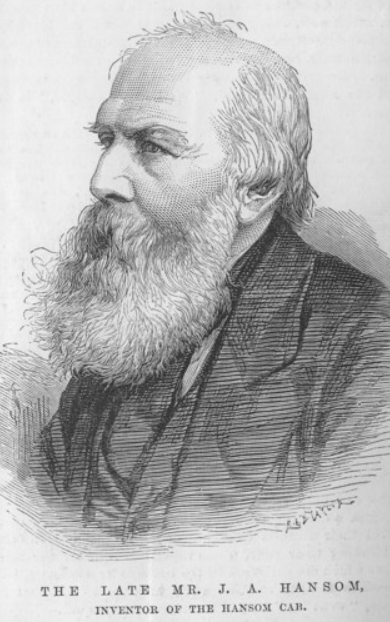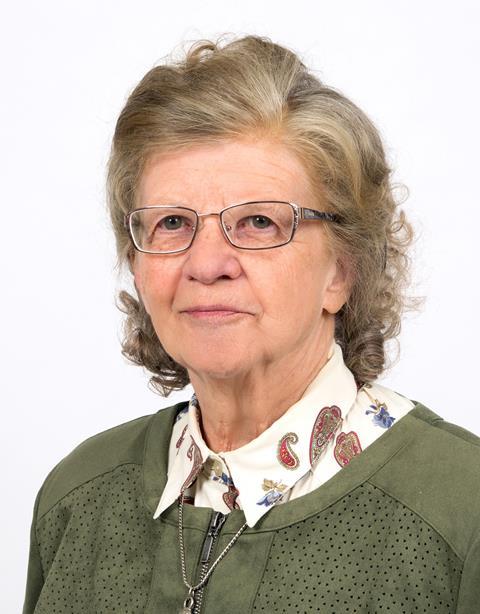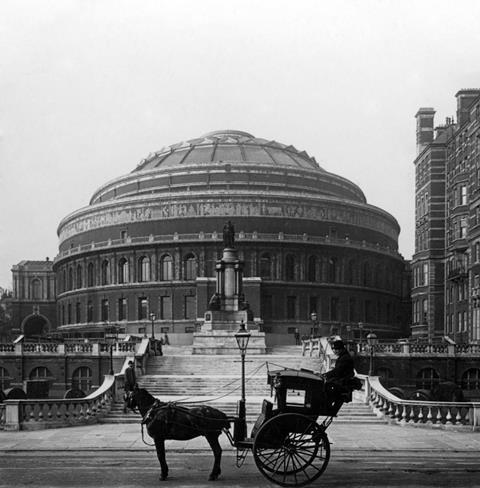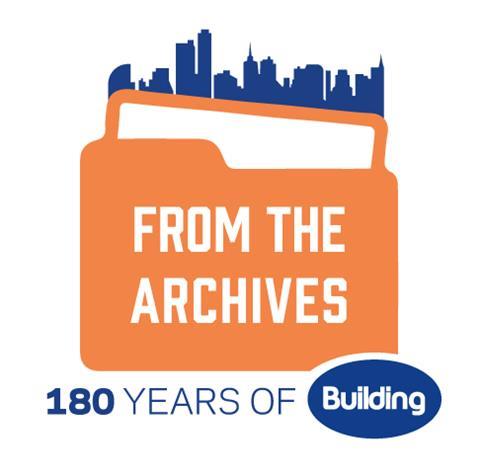To celebrate ΚΟ…Ϊœ»…ζTVβÄôs 180th anniversary, Tom Lowe talks to historian Penelope Harris ahead of the publication of her biography of the magazineβÄôs founder
It was a chance encounter with a street sign that inspired the new biography of ΚΟ…Ϊœ»…ζTV magazine founder Joseph Aloysius Hansom. Its author, historian Penelope Harris, was driving into the Leicestershire market town of Hinckley to take up a new job when the sign caught her eye.
Hinckley has a long history. It was founded in Anglo-Saxon times and was mentioned in the 11th-century Domesday Book. It was also close to the site of the Battle of Bosworth, which ended the Wars of the Roses, and a key battleground of the 17th-century English Civil War.

But the sign which marked the entrance to the town proclaimed: βÄ€Hinckley: Home of the Hansom CabβÄù. The βÄ€hansomβÄù for those who donβÄôt know, is a two-wheeled carriage invented by Joseph Hansom in 1834.
Light enough to be drawn by a single horse and with a low centre of gravity to prevent it toppling over while turning tight corners, it was a Victorian phenomenon. Some 7,500 of the cabs plied the streets of London during the 19th and early 20th centuries, and they were exported in large numbers overseas to cities including New York, Paris, Berlin and St Petersburg.
It was an early triumph for its namesake, whose reputation had been boosted a few years earlier with his work designing BirminghamβÄôs neoclassical town hall, now a grade I-listed and still much loved landmark of the city centre. He would go on to have a glittering, if chaotic, career in architecture which saw him become one of the 19th centuryβÄôs pre-eminent designers of Catholic churches. It was in Hinckley where Hansom founded ΚΟ…Ϊœ»…ζTV magazine, originally known as The Builder, in 1843, making this its 180th anniversary year.
Harris is from a family related to the Hansoms, but she had no idea that she had a connection to the town before arriving. It was the latest in a string of coincidences that seemed to be urging her to write the book which she is now close to completing, and which is due to be published next year.
When she was growing up she was made aware of the hansom cab and Arundel Cathedral, another of HansomβÄôs grade I-listed designs, but the architect was not much talked about. After leaving school, she lived in a flat in South Kensington, close to where Hansom lived for several years. Much later she had a job in Kent at a firm which held its AGMs in West Kensington, coincidentally next door to a house previously owned by one of HansomβÄôs close relatives.

After seeing the sign in Hinckley, Harris joined the local history group and was put in touch with the widow of Dr Denis Evinson, whose masters degree was based on HansomβÄôs life. His thesis βÄ€intrigued meβÄù, Harris says. βÄ€How did Hansom work across the whole country, often simultaneously in locations very far apart?βÄù
Her interest led her to get in contact with someone who was working on a major restoration of Birmingham Town Hall. He showed her around the building, which at the time was completely enshrouded in scaffolding.
It was after this visit that she started her research into Hansom in earnest. This quickly turned out to be a more daunting task than she expected. Hansom lived a highly mobile existence, hopping from town to town as he managed multiple projects in different parts of Britain at the same time.
βÄ€When I first set out to write HansomβÄôs biography, I naively thought I could begin in York, his birthplace, and follow through chronologically,βÄù Harris says. βÄ€How very wrong - there was nothing logical in his life, which made the assemblage of a structure extremely challenging.βÄù
But she soon started to accumulate a large amount of background information as she embarked on a zig-zag tour of the country, tracing HansomβÄôs steps from project to project. βÄ€Almost with a sense of destiny, it became something I had to do, becoming more and more personal, especially over the last few years,βÄù she says.
In the Talbot Library in Preston she unearthed an original copy of HansomβÄôs entry into the 1855 Paris Exhibition. In Liverpool, she met an archivist who showed her letters regarding HansomβÄôs Training School for Catholic Schoolmistresses.
She also found extensive letters regarding the design of a church in Selby, North Yorkshire. She made the discoveries just in time; the Preston Library is now closed, and the Liverpool archives have been transferred to Belgium.
Numerous priests and nuns were also very welcoming and helpful with good records, sharing primary documents not to be found elsewhere, Harris says.

Other sources have included ΚΟ…Ϊœ»…ζTV itself (previously called The Builder), archive copies of which are held in several libraries. From local newspapers she found details of opening ceremonies, lists of people involved in various schemes, including financiers and benefactors.
From archives in Birmingham she found a collection of letters between Hansom and stained glass designer John Hardman, who was married to one of HansomβÄôs daughters, while another daughter was married to HardmanβÄôs chief draughtsman. The letters not only revealed technical details, but occasional glimpses into HansomβÄôs family life.
>> Also read: The many lives of Joseph Aloysius Hansom
Harris describes Hansom as a βÄ€true VictorianβÄù, a man of almost manic energy, both in his work and his spiritual life. A devout Catholic, he was also active in early socialist politics. He had a Dickensian approach to social conditions, supporting the poor and encouraging education at all levels, Harris says.
As the Great Reform Act was making its way through Parliament in the 1830s, Hansom was encouraging his own workers to join unions. He took part in rallies of up to 200,000 people with social reformers Robert Owen and Daniel OβÄôConnell. He even designed a guild hall for the builders union, placing a box beneath the foundations that declared a βÄ€confident hope of a new era in the condition of the whole of the working classes of the worldβÄù.
Yet his own financial position in those early years was always on the verge of, and sometimes was, collapsing. He won the commission to design Birmingham Town Hall through what would now be called suicide bidding, estimating a cost of ¬Θ16,600, some ¬Θ6,000 lower than the next cheapest entry.
His design, based on the Greek temple of Castor and Pollux in Rome, beat a shortlist including some of BritainβÄôs greatest architects at the time βÄ™ including future Houses of Parliament designer Charles Barry and Bank of England architect John Soane βÄ™ to win the job.

But it came at a great personal cost. It appealed to the Birmingham street commissioners, the equivalent of a town council, but they did not trust his lack of experience or the financial shortcomings of his builder. To convince them, he agreed to act as the financial guarantor for the scheme.
This was highly unusual and unethical, but Hansom was βÄ€so keen to βĉhave itβÄô as he proclaimed, that he threw caution to the wind and acceptedβÄù, Harris says. At this time he was working in three places simultaneously βÄ™ Liverpool, Anglesey and Birmingham βÄ™ but the commissioners denied him any travel expenses.
He battled on, βÄ€stretching his ingenuity to its limitsβÄù, working all hours and even purchasing a brickyard and resorting to loans, including from his partnerβÄôs father. He then suffered a tragedy when a hook on the pulley-block lifting the roof timbers snapped, throwing three workmen flying and falling the full height of 70ft from the scaffolding to the ground, killing two of them.
The final straw was a delayed shipment of marble from Wales, forcing Hansom to declare bankruptcy. The commissioners took the town hall project from him and gave it to Liverpudlian architect John Foster. Hansom was so shocked that he published a βÄ€Statement of FactsβÄù, explaining how unfairly he felt he had been treated, and bemoaning that βÄ€his household goods were gone βÄ™ my children and my wife had no home to call their own, no bed to lie on, no bread for his parents for he had none to giveβÄô βÄù.
Though it turned out to be the making of his career, it was not the last of HansomβÄôs projects which suffered misfortune. During the construction of a cathedral he designed in Plymouth, defects were uncovered in a wall and the roof caved in, while two columns were found to be defective and replaced with granite.
Hansom was working in Boulogne-sur-Mer at the time and his brother, Charles, rushed to the scene. The incident was so great that the city surveyor was called upon to surround the building with a police cordon.

Hansom also became engaged in a βÄ€bizarreβÄù partnership with Edward Pugin, the son of Augustus Pugin, designer of Big Ben and the interior of the Houses of Parliament. The pair planned to design and build a church in Edinburgh for the local bishop and a large school of ecclesiastical art.
Hansom arranged for 500 workers to be relocated from Preston and leased a large building nearby which was to be the initial site for the school. Disputes quickly arose between him, Pugin and the bishop, who eventually withdrew all funding. The partnership between the two architects barely lasted a year and culminated in Hansom taking Pugin to court, resulting in much mudslinging. The two were βÄ€incompatibleβÄù, Harris says.
Even HansomβÄôs invention of his famous cab turned sour. In order to focus more on his architectural work, he sold the patent to a cohort of directors who promised him ¬Θ10,000, but eventually handed over just ¬Θ300.
His editorship of The Builder was also short lived. The weekly journal he founded in 1843 was inspired by his political involvement and Robert OwenβÄôs philosophies from time spent in Birmingham, but it suffered from lack of capital. Just a year after it was launched, and with its readership floundering, Hansom sold the publication to his printers JL Cox & Sons.
Against all the odds, The Builder survived, changing its name to ΚΟ…Ϊœ»…ζTV in 1966, and the magazine Hansom founded is still going strong 180 years later. It is now among the oldest business-to-business magazines still printed anywhere in the world.
Hansom eventually achieved a more stable financial position, becoming comfortably well off later in life, although Harris says he was never really wealthy. After a career of more than five decades, he retired in December 1879 at the age of 76, dying less than three years later.
Historian Joseph Gillow said after HansomβÄôs death, remarking on the famous cab: βÄ€It is given to few to see their names spelt with a small initial, a distinction which assuredly marks extreme celebrity.βÄù
From the ΚΟ…Ϊœ»…ζTV archives
To celebrate ΚΟ…Ϊœ»…ζTVβÄôs 180th anniversary, we have been trawling through our achives to find some of our most interesting journalism. See below

>> NelsonβÄôs Column runs out of money, 1843-44
>> The clearance of LondonβÄôs worst slum, 1843-46
>> The construction of the Palace of Westminster, 1847
>> Benjamin DisraeliβÄôs proposal to hang architects, 1847
>> The Crystal PalaceβÄôs leaking roof, 1851
>> Cleaning up the Great Stink, 1858
>> Setbacks on the worldβÄôs first underground railway, 1860
>> The opening of Clifton Suspension Bridge, 1864
>> Replacing Old Smithfield Market, 1864-68
>> Alternative designs for Manchester Town Hall, 1868
>> The construction of the Forth Bridge, 1873-90
>> The demolition of Northumberland House, 1874
>> Dodging falling bricks at the Natural History Museum construction site, 1876
>> An alternative proposal for Tower Bridge, 1878
>> The Tay Bridge disaster, 1879
>> ΚΟ…Ϊœ»…ζTV in Bombay, 1879 - 1892
>> Cologne CathedralβÄôs topping out ceremony, 1880
>> BritainβÄôs dim view of the Eiffel Tower, 1886-89
>> First proposals for the Glasgow Subway, 1887
>> The construction of Westminster Cathedral, 1895 - 1902
>> WestminsterβÄôs unbuilt gothic skyscraper 1904
>> The great San Francsico earthquake, 1906
>> The First World War breaks out, 1914
>> The Great War drags on, 1915 - 1916


























No comments yet